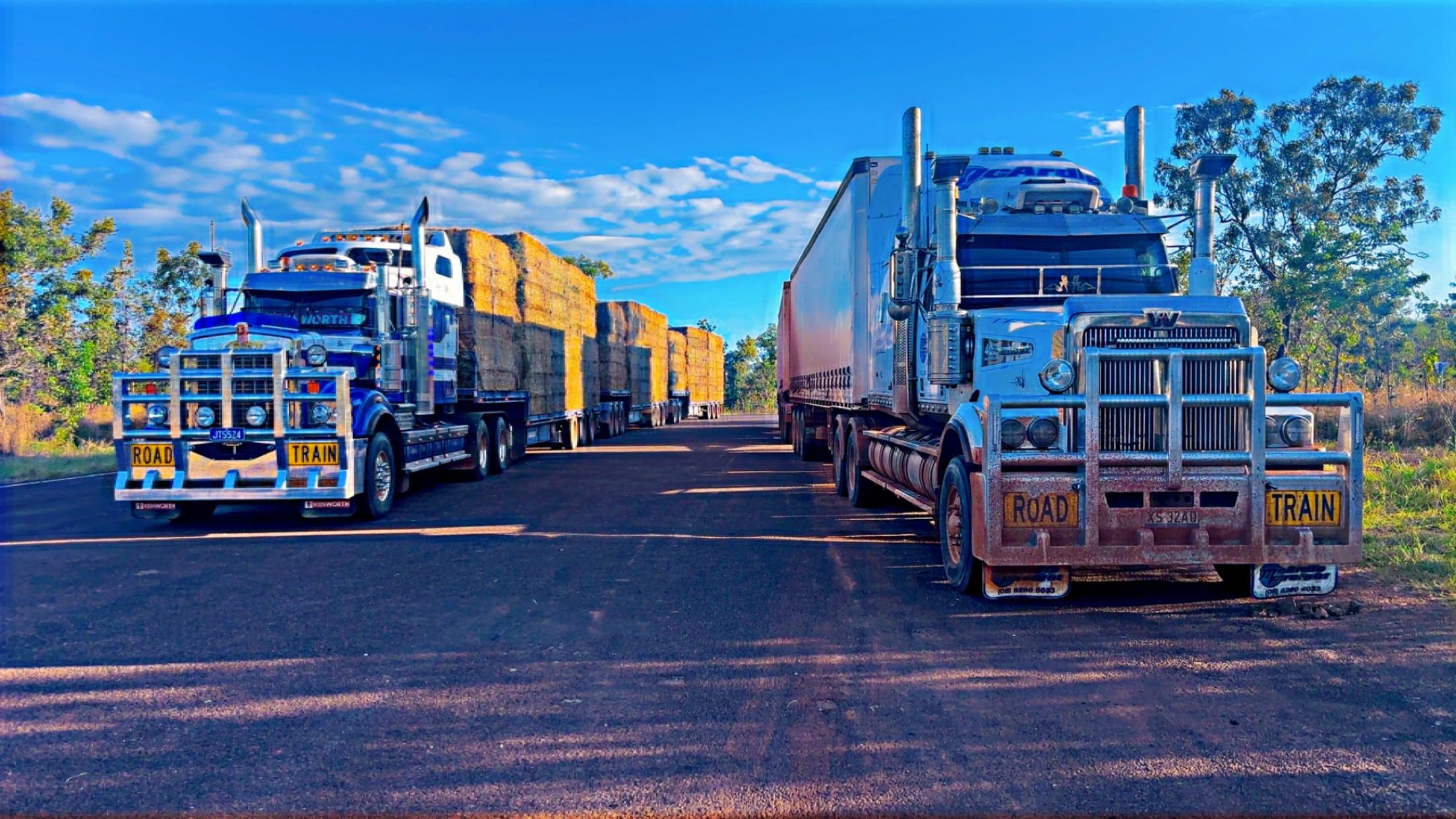
Loads of Cavalcade hay on the way to South Australia from operations in the Northern Territory. Photo: Roger Jenkin
THE ongoing drought across South Australia and Victoria is forcing a rethink in hay sourcing, with suppliers now turning to tropical varieties such as Cavalcade legume and Jarra grass from the Northern Territory to help fill the feed gap.
Much of the hay is coming from the Douglas-Daly region, a hub of irrigated production in the NT, and is proving an economical solution to feed shortages in the south, despite the distance involved.
Sources say hay from the NT has also proven simpler to bring in than hay from Western Australia, where biosecurity concerns over green snail infestations add layers of regulation and paperwork for trucks heading east.
Despite limited experience with these tropical varieties, southern producers report generally positive results, with the protein-rich legume Cavalcade standing out for its palatability, nutrient content and digestibility.
SA operator Roger Jenkin, of Jenkin Transport Services, shifted his business focus entirely to carting hay from the NT a few months ago as local supplies dried up.
The move marks a reversal for Mr Jenkin, who in a typical season would truck hay out of SA while supplying only a handful of local feedlots.
Mr Jenkin said he and his subcontractors had moved around 15-20 loads of hay from the north over the past two months.
“It’s the first time that I’ve heard it coming down that far into SA and right into Victoria,” Mr Jenkin said.
The journey from SA to the Territory takes up to three days each way, adding to costs, but Mr Jenkin said that with a protein-rich variety like Cavalcade, it remained more economical than sourcing hay within the state.
“The Cavalcade, as a protein hay, we can get it back cheaper than you can find anything around home, cheaper than oaten hay.”
Goulburn-based Doug Sproal from Flowers Freightliners has also been transporting hay from the NT to southern states.
Mr Sproal said he had mainly been carting Jarra, a tropical grass species, for customers.
With ample supplies in regions like the Douglas-Daly, Mr Jenkin said the hay was proving “the short-term answer to all the problems”.
“I’ve heard of a lot of road trains coming into SA that are bringing a lot of it back from the NT.
“Just lately it’s gotten big.”
Lack of experience with varieties
As most producers had little experience with Cavalcade or Jarra, there was some initial hesitation about how livestock would adapt to the hay.
Mr Jenkin said it was understandable.
“It’s a new hay for everyone down this way,” he said, adding that producers have reported positive results.
“With the Cavalcade, people who buy it are coming back for it.
“They love it, sheep and cattle, whichever it’s being fed to.
“There is no doubt, they will go straight on to it, and they will do well with it.”

Operators have pivoted to transport tropical varieties to southern states. Photo: Roger Jenkin
With Jarra, Mr Sproal said it did take cows “a little bit to get started on it but once they’re on to it, they’re right”.
“The problem is that all the growers down south have never heard of this stuff.”
Fodderlink founder Cameron Angel, who supplies hay and straw across Australia, said Cavalcade offered a “performance-type feed” solution, while Jarra was more suited as a filler feed.
“Cavalcade has only been around for the last 10-15 years,” Mr Angel said.
“It’s a legume plant that grows in the summertime and they cut it about late April.
“It’s a soil conditioner…and it makes really nice hay, it’s fine-stemmed, and it’s a runner.
“Cattle will maintain or do a bit better on it.”
Demand slightly softer
Good rainfall in some cropping regions across SA, Vic, and southern New South Wales in recent weeks has provided a glimmer of hope for producers’ drought-feeding stock.
However, short days and cool to cold temperatures are limiting growth of crops and pastures keeping the demand for feed present in the immediate term.
Mr Jenkin said the interest was “slowing down a bit” following the recent rain, and some producers opting to sell off stock.
“Mainly people who ring up now are the ongoing customers that we’ve had from we started.”
Mr Angel said they were “doing little pieces at a time” as the market hinged on how well winter crops progress.
“We want to supply and we’re doing that for people but once they’ve got grass growth…it’ll turn around quite quickly.
“What happens then is a lot of sheds open up, so as they’ve secured their feed, they’ll sell what they can at a better price.
“What we are finding, especially with hay, people will release the feed that they were holding back for themselves because now they are sure they are going to get their winter crop.”
Grain Central: Get our free news straight to your inbox – Click here

HAVE YOUR SAY